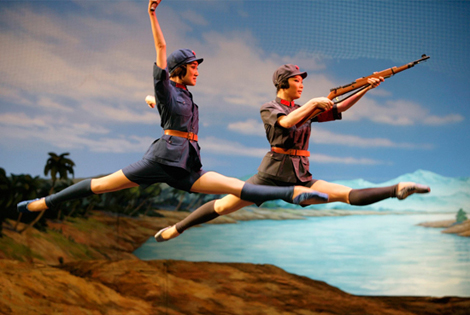 In my role as Chair of the DC Advocates for the Arts I’m a funnel for activity, and a participant. (Makes me the think of the hair club for men.) Leadership in activism pretty much works that way.
In my role as Chair of the DC Advocates for the Arts I’m a funnel for activity, and a participant. (Makes me the think of the hair club for men.) Leadership in activism pretty much works that way.
Activism is a group activity. From earlier experiences (in environmental advocacy) I’ve seen that the more people you involve, the more chatter or vibration you tend to get in programmatic focus.
If it’s a hassle, or useless, to be involved, people tend not to get involved. If it’s worthwhile, and people can make a difference, they tend to. How can you encourage participation, while not losing too much focus? One consideration is how you build a team. Should it be a dictatorship, or is there a better way?
I wrote in an earlier post – about dancing contact improvisation – that no-one dances the same with every person. To translate from Somatic (body) metaphor: we are all responsive to one another. As an organizational leader I not only dance with folks, but help arrange/frame dances for others. How can I encourage the most fulfilling dances – for myself, and for others?
 When I was in college I was President of the Outing Club, and in that capacity organized regular weekend day trips, as well as three term-break trips.
When I was in college I was President of the Outing Club, and in that capacity organized regular weekend day trips, as well as three term-break trips.
The first time that I led a group on a week trip to the southwest, I enrolled the trip first come, first served. The second time I did that trip, I created a one page survey which asked questions about experience, perspective, and goals.
The first trip we encountered few problems, but had lots of conflict. The biggest issue was that three members pretty much refused to be on a group agenda, and ended up heading off to do their own thing. As the ‘person responsible’ I was quite uncomfortable, and it also fractured the experience for everyone else. We weren’t one group.
The second trip I picked the people who I thought would be both cooperative and interesting participants. The trip was awesome. On the first day hiking we got completely lost. We headed into a canyon, but we think we dropped in one ravine early, or one ravine late. We were supposed to have two days hiking around ruins, with a stream, and beautiful campsites. Instead we had little water, uneven gravelly campsites… and an amazing, joyful, peaceful time.
My involvement in advocacy is about process. I think activism requires a certain inefficiency (like art.) And as an organizational leader I’m reminding myself that we will rarely be hiking single file. We’re gonna cut a broad swath if we do this right. You do what you can to get/keep people on the same page, but that’s just the way it goes. I realize that is the opposite of the message from my outing club experience. In the real world things don’t work like an outing club trip.
The Oberlin College Outing Club wasn’t a big organization. We didn’t have a major campus presence like similar clubs do at other schools. It was ohio… not much nature. Big music school. I can remember running into a friend at a party who was very involved in GLBT activism. He asked: “so, what have you been doing?” and I said, “well, I’ve been doing some stuff with the Outing Club.” I think we might not have been on the same page about what the outing club did, cause his response was: “That’s terrible! Why would you do that?!?!” (Glad to reconnect with you, M. : )

